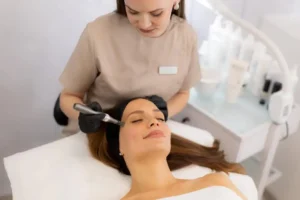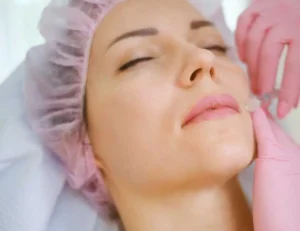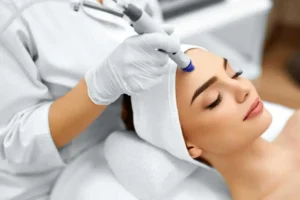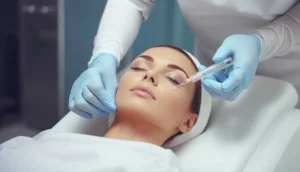As one of today’s modern approaches to skin rejuvenation, red light therapy, also called RLT, is an emerging treatment showing promising potential in treating acne, redness, scars, wrinkles, and other signs of aging. Most researchers say more clinical trials are needed to confirm its effectiveness as a treatment. People interested in red light therapy usually ask doctors and healthcare providers if this is an option for their skin issues.
Today, let’s talk about RLT, how it works, and how frequently one should get this procedure. Read until the end and discover if the red light therapy can also work for your skin issues.
What is Red Light Therapy?
Red light therapy, or RLT, is a treatment that uses low-wavelength red light to improve the skin’s appearance, like reducing acne, redness, scars, and wrinkles. Additionally, it’s touted for treating other known medical conditions.
There’s a lot of ongoing research and publication of small studies, and much discussion is happening on the internet about red light therapy’s effectiveness for all types of health uses. Some studies show some promise, but experts have yet to agree on the full efficacy of RLT.
Other names you might encounter to describe red light therapy include:
- Biostimulation, photonic stimulation
- Cold laser therapy
- Low-level laser light therapy
- Low-power laser therapy
- Non-thermal LED light
- Photobiomodulation and phototherapy
- Soft laser therapy
How Does RLT Work?
As thought to work by acting on the “power plant” in your body’s cells called mitochondria, red light therapy affects other cells. It can work more efficiently with more energy, such as repairing skin, boosting new cell growth, and enhancing skin rejuvenation. More specifically, specific cells absorb wavelengths of light, stimulated to work effectively.
RLT may work in skin health to:
- Increase blood circulation to the tissue.
- Stimulate fibroblast production, making even more collagen, a component of connective tissue that builds skin.
- Reduce inflammation in cells.
- Stimulate collagen production, giving skin structure, strength, and elasticity.
Frequently Asked Questions About RLT
“What skin conditions are the red light therapy being tried on?”
Red light therapy is advertised as a treatment for some common skin conditions, including to:
- Improve acne
- Improve facial texture
- Improve hair growth for those with androgenic alopecia
- Improve wound healing
- Improve psoriasis, rosacea, and eczema
- Improve scars
- Improve sun-damaged skin
- Reduce stretch marks
- Reduce wrinkles, fine lines, and age spots
“Is RLT effective?”
Most experts must determine if red light therapy is effective for all its claimed uses. Most experts claim that studies published so far promise state potential for particular conditions. However, more studies also claim a need to be conducted before finalizing the results. RLT is still an emerging treatment that’s generating growing interest. But at this point, there’s not enough evidence to support most uses.
“Is this therapy safe?”
Red light therapy appears safe and is not associated with any side effects, at least if used short-term and as directed. This therapy is not toxic, invasive, or as harsh as some topical skin treatments. Unlike the cancer-causing ultraviolet or UV light from the sun or tanning booths, RLT doesn’t use this type of light.
The safest option is seeing dermatologists or qualified, trained cosmetic therapists. Dermatologists can ensure your skin condition is what you think it is and discusses the merits of red light therapy and other treatment options.
“Are devices used at home for RLT safe and reasonable options?”
You may find out that many red light therapy products if you search on the internet. While these products are generally safe, they may use a lower wavelength frequency, meaning they are less potent than devices used by skin experts like dermatologists or other medically trained skin professionals. If you do resort to purchasing a red light therapy device, make sure to shield your eyes for protection, follow all directions and take good care of the device.
In addition to medical office-based and at-home use with a purchased device, you may see red light therapy being promoted at skin clinics and beauty spas and salons, gyms, tanning salons, saunas, and wellness centers. But be cautious of who would administer your red light therapy. It is best to always check in with a medical professional about the best options to treat your skin condition or issue.
“What other conditions are red light therapy being promoted and used for?”
Other potential medical uses being investigated for red light therapy include the following:
- Prevent cold sores that resulted from herpes simplex virus from recurring
- Diminish cancer chemotherapy side effects, including oral mucositis
- Relieve pain and inflammation associated with ankle tendonitis, rheumatoid arthritis, carpal tunnel syndrome, and osteoarthritis of the knee
Furthermore, lots of other uses can be seen on the internet. Although there’s no scientific evidence to support red light therapy use in weight loss, cancer, cellulite removal, or mental health concerns like depression and seasonal affective disorder or SAD.
“What other information do I need to know about RLT?”
Many variables come into play in considering red light therapy:
Do you trust other people’s experience after RLT?
- For example, is a tanning salon where you feel comfortable receiving this treatment, or is it better to be seen and treated by a medical professional?
How many RLT treatments will I need?
- You’ll likely need ongoing treatments. This procedure is not a one-time treatment for most skin conditions. You’ll need to be seen twice a week for weeks or months. Also, are I required for additional touch-up treatments? This event may add up to a lot of time and out-of-pocket costs.
Is RLT an appropriate treatment for my skin condition?
- Are other, more scientifically vetted approaches better for my particular skin condition? Talk to your doctor or healthcare provider to confirm a diagnosis and discuss appropriate treatment options.
Does my health insurance cover red light therapy?
- Like many other cosmetic treatments, red light therapy is not covered. You should call your health insurance company before seeking treatment.
Will I achieve my desired RLT results?
- Everyone’s skin is different, so results can vary—also, wavelengths used for red light sources range and would vary per individual. The content wavelength affects how deeply the light penetrates your skin. The wavelength of the red light therapy device used in a doctor’s office versus your at-home device could affect your desired result.
The Bottomline
Red light therapy can be the best option for your skin concerns. Discuss with trusted skin experts if this treatment is the best option for you, so you can take advantage of the benefits red light therapy offers.
If you are interested in red light therapy, our wonderful friends at The Well Med Spa can help you today. Visit them now!







